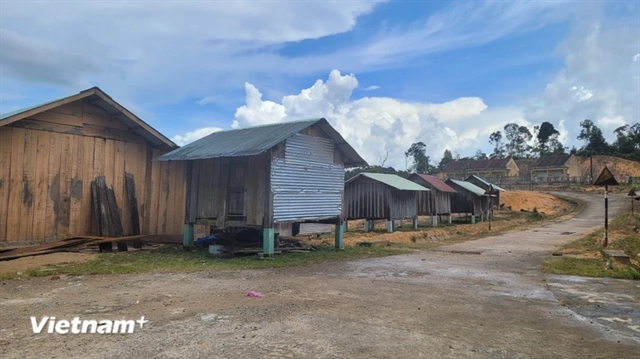Five earthquakes in Kon Tum in one day
Society – Economy - Ngày đăng : 13:56, 09/01/2025
 |
| An area frequently affected by earthquakes in Kon Plông District, Kon Tum Province. — VNA/VNS Photo Hùng Võ |
KON TUM — Five earthquakes were reported in Kon Plông District, Kon Tum Province, on Thursday, according to the Earthquake and Tsunami Warning Centre under the Institute of Geophysics, Vietnam Academy of Science and Technology.
The strongest tremor, with a magnitude of 4.2, occurred at 1.55am at coordinates of 14.955°N, 108.180°E and a focal depth of 8.2 kilometres.
In 2024, Việt Nam experienced 482 earthquakes with magnitudes ranging from 2.5 to 5 on the Richter scale.
More than 440 of these were concentrated in Kon Plông District, with the remainder occurring in provinces and cities such as Quảng Nam, Hòa Bình, Tuyên Quang, Phú Yên, Quảng Ngãi, Yên Bái, Vĩnh Phúc, Thừa Thiên-Huế, Thanh Hóa, Điện Biên, Ninh Bình, Lai Châu, Cao Bằng, Lào Cai, Phú Thọ and Hà Nội.
Experts from the Institute of Geophysics classify the tremors in Kon Plông District as induced earthquakes, which have been occurring frequently since 2021.
Speaking to VietnamPlus.vn, Dr Nguyễn Xuân Anh, Director of the Institute of Geophysics, explained that these earthquakes result from water accumulation in hydropower reservoirs, which exerts pressure on underlying fault systems.
Factors such as reservoir water levels, the rate of water accumulation, and the total volume of water contribute to these induced seismic activities.
However, the effects may take months or years to become apparent as water gradually infiltrates the subsurface.
Dr Anh warned that earthquakes in Kon Tum are likely to persist, posing risks to densely populated areas and critical infrastructure near the epicentre.
He emphasised the need for local authorities to regularly update information and adopt seismic-resistant design measures for buildings and infrastructure.
Local People’s Committees are required to notify residents of earthquake and tsunami warnings, organise evacuations, mobilise resources, and ensure security in affected areas. Residents in high-risk zones are urged to evacuate promptly to safeguard their safety. — VNS
